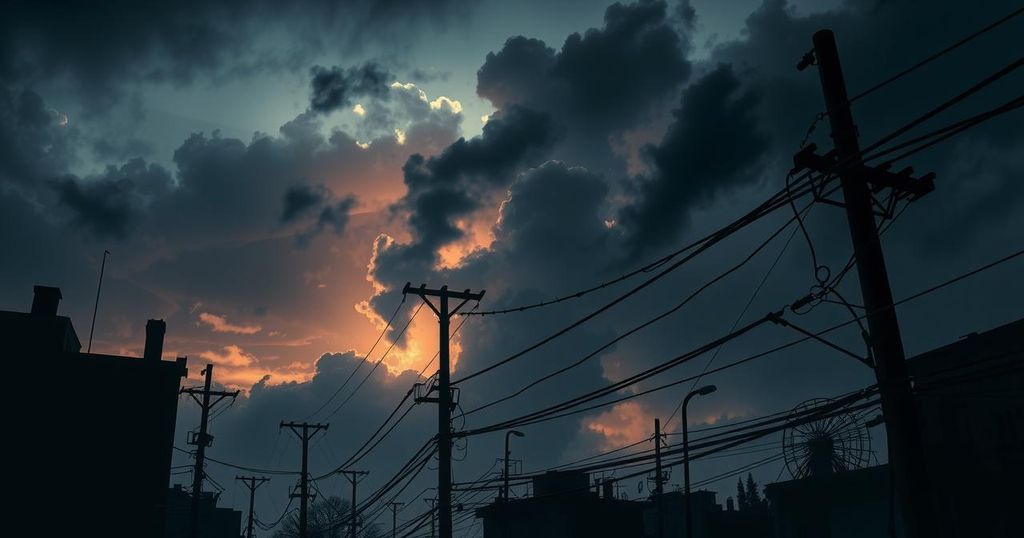Iranian Protests Escalate Due to Economic Struggles and Power Outages

On February 14, 2025, widespread protests erupted in Iran’s cities due to severe power outages and economic hardship. Demonstrators voiced their anger against the regime, particularly targeting leaders for their failures. Issues such as heating shortages, wage disparities, and supply chain disruptions contributed to the unrest. As the government struggles to respond, the potential for larger protests increases.
On February 14, 2025, protests erupted across several Iranian cities due to widespread power outages and economic challenges. Demonstrations took place in Tehran, Karaj, Bushehr, Isfahan, and Hormozgan, with participants chanting anti-regime slogans and seeking accountability from government officials. The protests reflect growing public discontent with the ruling regime as citizens tirelessly voice their frustrations.
Widespread blackouts in cities like Tehran, Karaj, and Khorramdast have ignited renewed protests. Residents of Chahardangeh and Khorramdast particularly expressed their anger over the government’s inability to resolve the power shortages. The electricity crisis coincides with colder weather, which exacerbates the challenges families face regarding heating, leaving many without proper warmth.
As the situation escalates, the regime’s president, Masoud Pezeshkian, faced opposition during his visit to Bushehr. Protesters expressed their anger on social media, calling for his resignation and referencing the regime’s history of executions, chanting, “Pezeshkian, with more than 780 executions on his record, resign immediately!”
Pharmacists in Isfahan staged a protest demanding overdue payments and addressing supply chain disruptions within the pharmaceutical sector, declaring, “Empty promises are enough, our accounts are empty.” Meanwhile, oil industry workers in Hormozgan protested against unfair wage disparities, advocating for job classification reforms and better management of pension funds.
In various neighborhoods, including Ekbatan and Karaj, anti-regime chants echoed during nightly demonstrations. Protesters called for the ousting of Supreme Leader Khamenei, with slogans such as “Death to Khamenei” and “From Dehdasht to Tehran, my life for Iran” displaying the unrest’s depth. Citizens in multiple cities have joined in voicing grievances over power outages and government mismanagement.
The ongoing protests reflect public frustration as citizens endure repeated power outages and economic strain. With severe energy shortages affecting 24 provinces, the situation remains critical, and the regime appears unable to implement effective solutions to address public dissatisfaction. As discontent continues to swell, the possibility of larger, more organized protests looms on the horizon, threatening the stability of the current regime.
The protests sweeping across Iran demonstrate the citizens’ mounting discontent due to ongoing power outages and an economic crisis. As residents of various cities express their frustrations against the government’s inaction, the situation poses significant challenges for the ruling establishment. The regime’s inability to address citizens’ grievances may lead to further escalation of civil unrest.
Original Source: www.ncr-iran.org







